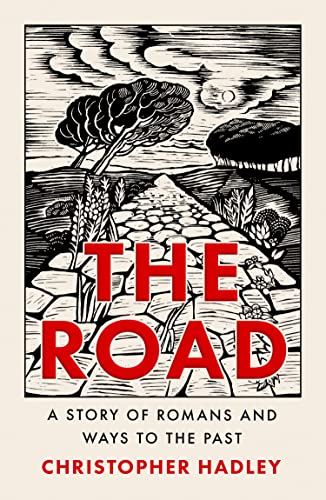In the muscular movie Gladiator, which I recently re-watched with my far-too-young son, the hero Maximus harangues the jaded Roman spectators. “Are you not entertained?” he bellows, after butchering his rivals in the arena. “Are you *not* entertained?” To his surprise, he finds they are.
Yet what made that film a hit in 2000 wasn’t just the bloodshed, I think. It was also the vision it presents of a noble ideal behind Roman imperialism. “I have seen much of the rest of the world,” Maximus observes earnestly. “It is brutal and dark and cruel. Rome is the light.”
That same light is now the theme of Christopher Hadleys’ richly written book about Britain’s Roman roads. As he notes, the dazzling feat of engineering and logistics, which created 50,000 miles of such roads across the European continent, wasn’t surpassed until the age of the railway. How did they do it? Why did they do it?
To explore these questions, Hadley picks a Roman road—rather a short one, in point of fact, the 14-mile route between Braughing in Hertfordshire and Great Chesterford in Essex. He has walked it many times over the years, and cobbles these strolls together into what reads like a single excursion, while pondering the past.
We pick up some wonderful things along the way. As a Thomas myself, I was thrilled to learn that the word “Thomas” can be used as a verb. On the feast of St Thomas on 21 December, the poor and aged used to wander door to door, begging for scraps so their Christmases might be bearable. This was known as “going a-Thomasing”.
I was similarly consoled, as I went a-Thomasing through this book, to be gifted the information that thousands of leather soles have been found by Hadrian’s Wall, which date back to the Roman occupation in the first four centuries AD. I was gratified, too, to read about “Greek foot”, which is when your longest toe isn’t your big toe, but the next one along. This was an ideal of beauty in those times. I instantly doffed my sock to see if I qualified. Enragingly I didn’t, but my wife did.
Overall, though, I felt I was depending on alms while I read this well-appointed volume, instead of being treated to a feast. I couldn’t work out why the author had chosen this road especially, rather than any of Britain’s four longer, more storied Great Ways: the Fosse Way, the Icknield Way, Watling Street or Ermine Street.
If it was near Hadley’s home, and if he was restricted from travelling further by lockdown, we never learn. He mentions that, according to Oliver Rackham (the “great historian of English landscape”), the lesser-known ways may be more “eloquent”. We get no better answer than this.
Like most art, The Road takes a synecdochic approach, using a part to represent the whole. Zoom in on this short stretch, it promises, and you shall understand the entire Roman roadmap. Yet the preference for a lesser-known way feels trendy. Too often, nowadays, we single out the example, the voice, the perspective, that has been systemically overlooked, regardless of whether it can bear the weight of scrutiny.
When it does, the results are extraordinary. Here it doesn’t, for reasons I suspect are partly rooted in familiarity blindness. The author, who knows so much, loses sight of what’s necessary. He doesn’t caption his pictures or signpost in the text when we may find a note at the back of the book. For me, he sells us short on human stories.
I wanted to be told more about Eric Stacey, the teenage archaeologist; Edward Thomas, the poet who walked the Icknield Way; and Ivan Margary, the doyen of road hunters, who also, I later learned, donated a quad to Exeter College, Oxford.
Hadley, whose last book Hollow Ways earned great acclaim, has a descriptive gift more than a narrative one. He showers us with lovely Anglo-Saxon words like “berm”, “hoggin” and “smoring”. But when he remarks that it’s hard to tell from Margary’s Roman Roads in Britain that roads were the author’s passion, I immediately thought that the same could be said of his own book.
Hadley loves the English countryside but it’s not clear he feels the same about Roman roads. When it comes to their proverbial straightness, for example, he can barely bring himself to talk about it, calling the subject “tedious to all but a few enthusiasts”. This is clearly wrong: it is interesting to all but a few enthusiasts.
That was the point that turned my imperial thumb. I’m sorry to say it, but I wasn’t entertained.

